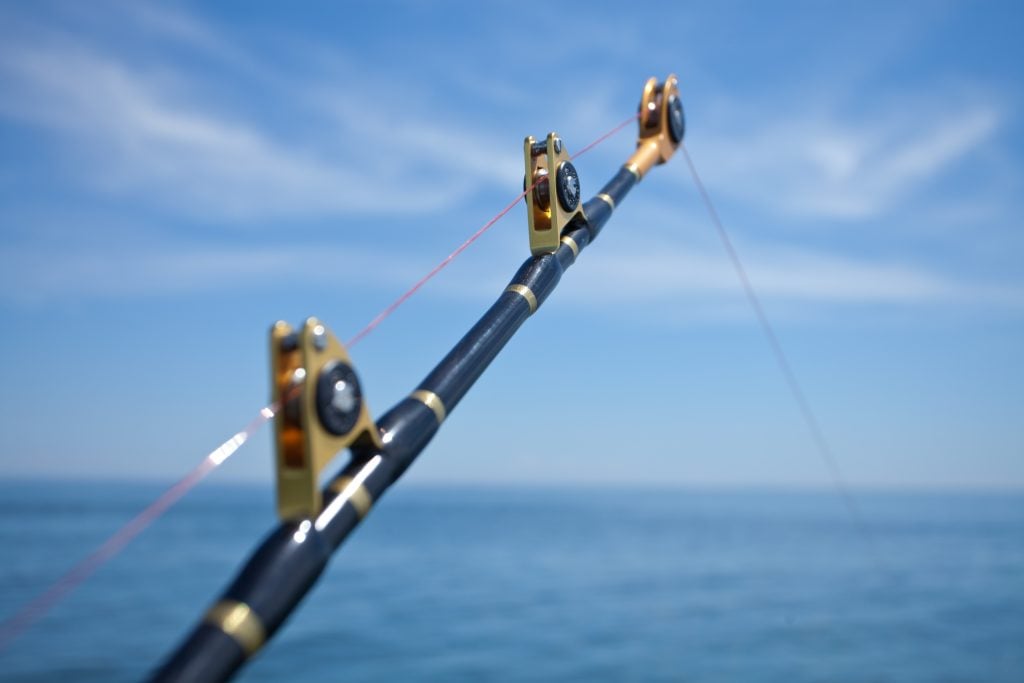

From box to water's edge: a complete beginner's guide to assembling your rod, mounting the reel, and rigging your line for success. You’ve got your new gear, and the excitement is real. But now you're faced with a box of parts. How do you set up a fishing rod and reel? For new anglers, this can seem daunting. Don't worry, it's much easier than it looks. This guide will walk you through a simple, step-by-step process. We will turn that collection of parts into a fish-catching machine. Let's get your ready for action.

Step 1: Assembling Your Fishing Rod Sections
Most spinning rods come in two pieces. Assembling them correctly is the first step. This ensures your rod performs as it was designed. A proper assembly is strong and straight.
Identifying the Tip and Butt Sections
Your rod has two parts. The thicker piece with the handle is the butt section. The thinner, longer piece is the tip section. The male end (ferrule) is on the tip section. It slides into the female end on the butt section.
How to Align the Guides for a Straight Rod
Gently slide the two fishing rod sections together. Now, look down the rod from the handle to the tip. Rotate the tip section until all the line guides are perfectly aligned. A straight line of guides ensures your line flows freely. This maximizes casting distance and reduces wear.
A Snug Fit is Key
Push the two sections together with a firm, twisting motion. The connection should be snug, but don't force it. A loose connection can cause the rod to twist or even break during a cast. A properly fitted rod feels like a single solid piece.
Step 2: Mounting the Reel onto the Rod Seat
With the rod assembled, it's time for mounting the reel. The reel seat is the designated spot on the rod's handle. It's designed to hold your reel securely.
Locating the Reel Seat on Your Rod
Find the grooved area on your rod handle. This is the reel seat. It will have one or two locking nuts that you can twist to open and close the seat. Loosen these nuts to create enough space for the reel foot.
Securing the Reel Foot for a Wobble-Free Fit
Slide the reel foot into the reel seat. The reel foot is the part of the reel that connects to the rod. Make sure it is fully seated. Then, tighten the locking nuts firmly with your hand. The reel should not move or wobble at all. A secure reel is essential for a good fishing experience.
Which Way Does the Reel Go? A Quick Tip for Beginners
This is a common question. On a spinning rod, the reel hangs underneath the rod. The line guides will also be on the bottom side. This allows the line to flow smoothly off the spool during a cast.
Step 3: Spooling Your Reel with Fishing Line
Now that your rod and reel are one, it's time for spooling the reel. This step is critical for preventing tangles. A well-spooled reel casts farther and smoother.
A Quick Refresher on Spooling
The key to good spooling is tension. You must keep the line tight as you wind it onto the reel. Also, make sure the line comes off the new spool in the same direction that your reel's bail rotates. This simple trick prevents line twist. You want to fill the spool to about 1/8 inch from the edge.
For a Detailed Guide, Check Out Our Full Article
Spooling line has many nuances. For a complete tutorial with diagrams, we highly recommend our full guide. It covers everything you need to know about .
Step 4: Threading the Line Through the Rod Guides
Your reel is spooled. Now you need to get the line to the tip of the rod. This is a simple but important step for your fishing rod and reel setup.
Start from the Largest Guide to the Smallest
Open the bail on your reel. Pull a few feet of line off the spool. Start threading the line through the rod guides. Begin with the largest guide near the reel (the stripper guide). Work your way up to the smallest guide at the rod's tip (the tip top).

Don't Miss a Single Guide!
Double-check your work. It's easy to accidentally miss one of the smaller guides near the tip. A missed guide will create friction and hurt your casting performance. It can also put uneven stress on your rod.
A Simple Trick to Make Threading Easier
Here's a helpful threading tip. Fold the last inch of your line back on itself. Pinch the doubled line to create a stiffer point. This makes it much easier to poke through the small rod guides.
Step 5: Tying on Your First Hook or Lure
You are at the final step! It is time for tying on a lure or hook. This is where your connection to the fish is made. A strong knot is non-negotiable.

Choosing Your First Knot: We Recommend the Palomar
For beginners, we strongly recommend the Palomar knot. It is incredibly strong and very easy to learn. It works great with all types of line. This knot will give you confidence that your connection is secure.
Need a Refresher on Knots? We've Got You Covered
Mastering a few key knots is a vital fishing skill. If you are unsure how to tie the Palomar knot, don't worry. We have a detailed guide with easy-to-follow diagrams. You can learn all about in our complete tutorial.
Final Checks: Your Beginner Fishing Setup is Complete!
You did it! Your rod is assembled, the reel is mounted, and a lure is tied on. Before you cast, do one last check. Set your drag. The drag is a knob on your reel that controls line tension. A good starting point is to pull line from the rod tip. It should come out smoothly with moderate resistance.
You are ready to cast. This complete is your ticket to a world of adventure.
Do you remember setting up your first fishing rod? Share your story in the comments below!
Frequently Asked Questions (FAQ) for Your First Fishing Setup
How tight should I set the drag on my reel to start?
A good starting point is to set the drag to about 25% of your line's breaking strength. For 8lb line, that's about 2lbs of pressure. You can test this by tying your line to a small weight or simply pulling it by hand. It should pull out smoothly, without being too easy or too hard.
I put the reel on backwards, how do I fix it?
Don't worry, it's an easy fix! Simply loosen the locking nuts on the reel seat completely. Slide the reel foot out. Flip the reel 180 degrees so it hangs underneath the rod, and then re-tighten the nuts.
How much line should I leave out of the rod tip?
Leave about 6 to 12 inches of line between your rod tip and your lure. This is a good length for making a controlled and accurate cast. Too little line makes casting difficult, while too much can get tangled.
My two-piece rod sections won't come apart. What do I do?
This is a common problem. First, try gripping each section with a rubber jar opener for better traction. If that fails, have a friend help. Stand facing each other, grab the rod on opposite sides of the connection, and pull straight apart without twisting. Gentle, steady pressure is key. Finding the right is just the start; knowing how to care for it is just as important.











